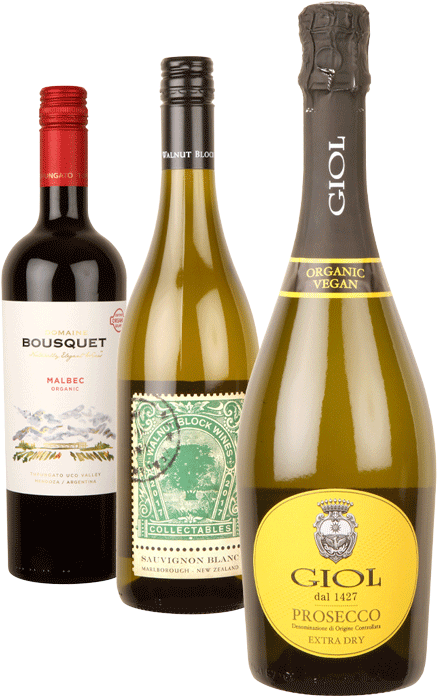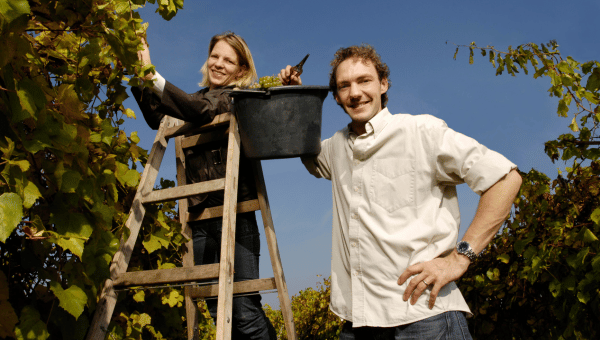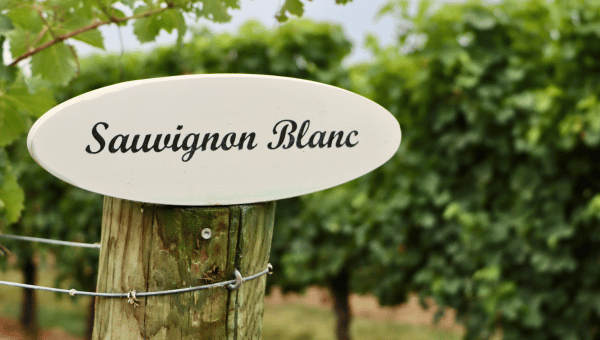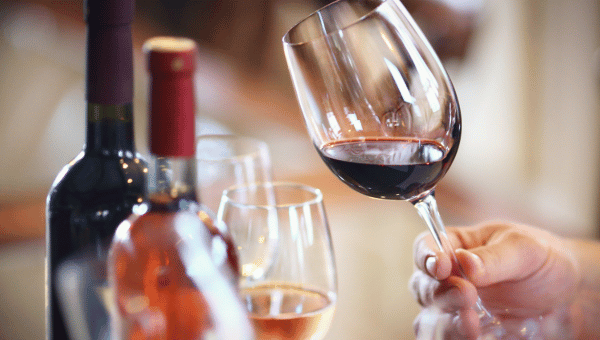The All-inclusive Guide to German Wine Regions

Germany is often caricatured as a nation of beer lovers, full of sturdy men bearing vast steins of foaming lager. However, as anybody who has spent time in this fascinating and ancient central European country will tell you; the Germans not only love their wine, but they also produce vast quantities of it… and Germany is solidly upheld as among the finest Old World wine producing countries.
While the reputation of German wines in the UK and in the USA suffered slightly in the latter half of the 20th – thanks to a flood of cheap, tooth-achingly sweet bottles which briefly became fashionable in the 1970s – the rest of Europe has long since revered the produce of Germany.
Indeed, there has never been a better time than the present to begin exploring these wonderful wines, thanks to the fact that key German grape varieties are once again very much en vogue.

If you are interested in figuratively dipping your toes into German wine (and you absolutely should be), you’ll be pleased to hear that there’s plenty to discover.
Across the sunny, verdant southern side of the country, we find a glorious array of German wine regions, each boasting its own character, its own style of winemaking, and its own dedication to excellence which has been honed and perfected across the centuries.
As always, we’re here to guide you through the best of the best, and have put together this handy article, highlighting the German regions and wine styles to look out for, as well as several other tempting tidbits to help you garner a deeper understanding of this superb wine producing country. Prost!
Germany’s Most Popular Wines
While German produces an impressive range of wines, thanks to the breadth of microclimates and indigenous varieties on offer, there are a few big hitters which no article about Germany’s viticulture would be without. Let’s take a look at the most popular German grapes and wine styles you’re likely to come across next time you’re shopping for a bottle.
Riesling
If Germany is associated with one key grape variety, it is surely Riesling. One of the select few ‘noble grapes’, it has been celebrated as one of the most expressive and delicious grapes on earth, with a history which has seen it reach the loftiest heights imaginable, being the preferred wine of the crowned heads of Europe for centuries.
Riesling has its origins in the Rhineland, and seems to have first arisen in the German wine scene around the mid 15th century, when viticulture as an art was first beginning to establish itself in and around the wine region of Rheingau.
This German white wine was quickly recognised for its astonishing aromatic qualities; it is intensely floral, and it has the kind of perfumed bouquet that sends sommeliers into raptures of joy to this day.

Boasting crisp flavours which range from green apples and lime, to honey, smoke and soft orchard fruits, Riesling is renowned for its versatility and ability to express a wide range of characteristics.
Indeed, versatility is perhaps the key quality to this grape; while today it is celebrated for its ability to produce intensely dry, crystalline wines that zing with acidity, it can also be vinified to produce sweet (sometimes very sweet), semi-sweet and sparkling wines, depending on how late the harvest, and the intentions of the winemaker.
Riesling is also one of the few white wines which often possesses age-worthy qualities. As such, it often gets cellared for several years, wherein it takes on extraordinary qualities and aromas reminiscent of forest floors and autumnal woodlands… utterly delicious!
Muller-Thurgau
As the interest in German white wines increases thanks to the newly invigorated enthusiasm for dry Riesling, many wine fans are seeking out other popular examples of quality German produce.
Muller-Thurgau is perhaps the second most widely drunk German white wine, and it is generally referred to as Germany’s ‘everyday wine’. Approachable, bright, full-bodied and floral, it’s a delightful wine to enjoy with food, and the rhubarb-like bitterness it displays make it a fascinating number to add to your collection if you’re already a fan of Riesling.
Liebfraumilch
Ask most people what they know about German wine, and the chances are, they’ll roll their eyes, smirk, and make reference to Liebfraumilch. ‘Beloved Lady’s Milk’ (named after its religious connections) remains a popular export, although for most wine lovers, this semi sweet wines is a fairly unwelcome blast from the past, which reminds us why Germany still struggles with a damaged viticultural reputation in some quarters.

It mostly hails from the Rheinhessen region, and while it still has a sizable market in the UK and US, it isn’t a wine which the locals turn to at all once it leaves the winery.
Spatburgunder / Pinot Noir
German Pinot Noir? Most people wouldn’t have heard of such a thing, and there’s a good reason for that. This most famous of French red grapes goes by a different name in Germany, where it is known as Spatburgunder.


The name of this German red wine translates as ‘late Burgundian’, in reference to the fact that this variety ripens late in the season, and its famously finickity character actually does very well in the cool, fine terroirs of the central German wine regions, where it results in wines which are light in body, colour and tannin.
It’s highly popular both at home and abroad – over 7% of Germany’s vineyards are used for the production of Spatburgunder, and this number is rising due to increasing demand.
Blauer Portugieser
Fresh, tart and light in body, Blauer Portugieser wines are one of the great food pairing vinos that Germany has to offer. This grape is grown widely across the Rheinhessen and Pfalz German wine regions, where it is often vinified into a rosé wine, as well as being one of the more popular German red wines.

It’s popular with vintners, as it’s a relatively hardy variety that is resistant to the changes in weather which typify many of the wine regions in which it flourishes. However, care needs to be taken to ensure yields are kept low, as the main feature of Blauer Portugieser is its acidity, which can drop unless attention is maintained.
Dornfelder
Dornfelder is grown almost exclusively in Germany, where it was created at a grape breeding institute in 1955. It is favoured for its dark colour, affinity for oak ageing and fresh acidity. The second most grown German red grape, it is popular with organic wine producers for its inherent disease resistance and early ripening.
The Evolution of the German Wine Industry
As with most European wine producing countries, the wine history of Germany is one which stretches across the millennia, and which was influenced primarily by the rising and falling of empires and occupying forces.
Those great viticultural pioneers, the Romans, were the first to cultivate wild grapes in sites such as Piesport, which remain important to the wine industry to this day.
Some incredible archaeological evidence has been found to support the claim that Germany was once a cornerstone of the Roman empire’s wine producing network – the largest Roman wine press ever found outside of Italy was uncovered in Piesport, and dated to 400 A.D.
Once the vineyards were established, and key grape varieties identified with which to make quality wines, the cultivation of grapes in Germany didn’t falter.
Once the Roman occupiers had retreated, leaving the kingdoms of Germany to begin establishing their own identities and way of doing things, it was the church which took on the mantle of vintner, and monastic wineries sprung up across the central and southern stretches of the country, further exploring the potential of the land.
The results were more than impressive – along with neighbouring France, Germany garnered a reputation of being the finest wine producing country on earth.
The royal courts of Europe from the 16th century onwards were fascinated and enthralled by German wines, and the botrytised (noble rot) wines made from Riesling were the most treasured German white wines on the continent.

This culminated with the obsession for all things German which occurred in England under Queen Victoria, who proclaimed herself a huge fan of German Riesling (which she called ‘Hock’ in reference to the Rhine community of Hochheim), an endorsement which saw production increase dramatically.
The first half of the twentieth century was an unprecedented disaster for Germany in general, and the poverty which it found itself in decimated the wine industry, along with the phylloxera epidemic.
The second half saw the reputation of German wines plummet, due to the prevalence of ‘Blue Nun’ and other sickly sweet export wines which the Germans themselves would have nothing to do with.
As the winds of fashion changed towards the turn of the millennium, and dry (or trocken, in German) white wines became on trend, Germany was ready to reclaim its crown as a leading wine nation.
Through hard work, a balance of tradition and forward-thinking, the Germans have enormously impressed with both their recent white and red bottles, which express a vigour, freshness and sense of place that fit perfectly with the new generation of wine fans worldwide.
Most Popular German Wine Regions
With its long history, thriving wine scene and wonderfully varied landscape, it comes as no surprise that the German wine map is one with many famous and highly regarded regions. Let’s look at a few of the key names you’re likely to see on bottles.
Pfalz
Formerly known as Rheinpfalz, this region is famous for a series of bold, rich wines which perfectly reflect the warmth of the southern climate. Strongly influenced by the winemaking traditions of its close neighbour France (indeed, the southernmost appellations of Pfalz actually cross the French border), it has seen something of a renaissance in recent years thanks to the quality of its white wines.

● Size: 59,000 acres of vineyards
● Main grape varieties: Riesling, Mϋller-Thurgau, Gewurztraminer
Rheingau
Ancient, beautiful and proud, the Rheingau wine region runs along the northern banks of the mighty Rhine river, which provides the vineyards with water, minerals and its unique microclimates. This is the home of many of Germany’s most classic and widely loved wines, as well as many of its most historic wineries.

● Main grape varieties: Riesling and Spatburgunder
● Size: 7,700 acres of vineyards
Mosel-Saar-Ruwer
This is perhaps the most famous of all the German wine regions, and is certainly the spiritual home of the Riesling grape, where it finds its most suited terroirs and expert winemakers. The region is split into four distinct sub-regions: Saar, Ruwer, Lower Mosel and Mittel Mosel. Each has a distinct microclimate, and the vintners who work this land know how to use them in order to ensure superb quality wines year after year.

● Main grape varieties: Riesling
● Size: 32,000 acres of vineyards
Baden
The mineral rich volcanic soils of Baden have long made it an important region for southern German winemakers. Here, grapes grow with an intensity and expressiveness which make for highly distinctive wines, and their lower levels of acidity ensure that richness, roundedness and juiciness are all features the vintners attempt to capture in bottle.

● Main grape varieties: Riesling, Gewurztraminer, Muller-Thurgau, Rulander
● Size: 41,000 acres of vineyards
Rheinhessen
This is Germany’s largest wine region, and yet interestingly, the one which is perhaps the most under-represented overseas. Again, the Rhine river provides much of the character for each of the sub-regions and appellations, and a very wide array of microclimates along the river valley ensure that winemakers have a varied palette of grape varieties they can work with. Rheinhessen produces complex, interesting wines… almost all of which are underrated and well worth exploring.

● Main grape varieties: Riesling, Müller-Thurgau, Silvaner
● Size: 65,000 acres of vineyards
Tips for Food Pairing
With their high levels of acidity, most modern German wines are absolutely ideal for pairing with food. Go to any good German restaurant, particular in the southerly parts of the country, and you’ll find that the cuisine seems to have developed with wine pairing in mind, so good are the matches that you’ll be presented with.
Have a go at the following suggestions, to see just how great German food and wine can be together!
Spaetzle with Cheese and Speck
You can’t get much more German than this deliciously filling, creamy dinner. Perfect for sharing with friends, it’s the German answer to mac ‘n’ cheese, and provides the same kind of warming, hearty qualities we all love at the end of a long day.

This dish is the perfect match for a bright and crisp modern Riesling, as the zesty acidity will cut through the creaminess of the dish and provide a fantastically exciting contrast… a little like a fresh green apple served with an aged cheddar cheese. Delicious!
Roast Pork and Sauerkraut
Germans love their pork, and there’s nothing better than a large roast dinner – made with all the trimmings – to share with friends and family come the weekend. The addition of sauerkraut is a particularly teutonic touch; the ubiquitous pickled cabbage brings out the sweetness of the pork and apple, and also acts as a digestion aid, too!


Of course, no German pork dinner would be complete without either a bottle of Riesling (a simple, softer Riesling would be best here, such as the Beetle Riesling from Romerkelter) or a lovely straightforward Müller-Thurgau.
Aubergine Schnitzel
A brilliant veggie take on the German classic, try serving with Dornfelder to make for a hearty evening meal. The dark cherry flavours work well with the fried aubergine while the bright acidity cuts through the oiliness.

Our Top German Wine Recommendations
Beetle Riesling Trocken Qualitatswein
This organic Riesling is a gorgeous example of just how successful organic viticulture has become in the world-renowned Mosel valley. Enormously expressive – the zero-intervention approach of the vintners has ensured that nothing has been lost between vineyard and bottle – and bursting with vibrant, bright, crisp and tart flavours, this is a modern Riesling as nature intended. No wonder, then, that it picked up an International Organic Wine Award!
Bee Blauschiefer Honigberg Riesling Kabinett
Here we have a wonderful organic Riesling wine, which features all the finesse and raciness we would expect from a Riesling bearing the prestigious ‘Kabinett’ distinction. This is a Riesling for the connoisseurs out there, and it presents a beautifully floral bouquet which explodes with notes of honey, poached pears, marzipan and white flowers.
Sharp minerality, wonderful expression, and all the classic Riesling characteristics in place, this is a superb example of modern German viticulture which no fan of Riesling wine should be without.
Theodorus Dornfelder
Excellent example of an unusual grape variety, grown almost exclusively in Germany. Like a Pinot Noir with extra body and colour, it has dark cherry flavours and bright acidity which means it’s great with a range of foods, despite being medium-full bodied.
Theodorus Spatburgunder
Spatburgunder is the German name for Pinot Noir, and it has become hugely popular over the last 5-10 years. It is still quite hard to find in the UK as so much is consumed in Germany and the rest of the Europe, but this is a cracker, showing all the delicate red fruits you’d hope for alongside the hallmark Pinot Noir ‘earthiness’.
Isn’t it time you rediscovered German wines?
Any negative prejudices anyone might have about German wines desperately need updating, as we have seen. Today, the Rheinland and Mosel Valley (among other regions) are making fashionable, fascinating German white wines and wonderfully complex and food-friendly German red wines, both of which demand the attention of the modern wine drinker.
With a long and impressive history, and some of the finest terroir to be found anywhere on earth, Germany has stepped up in the 21st century to regain its crown as one of Europe’s most impressive wine producing countries once again.










